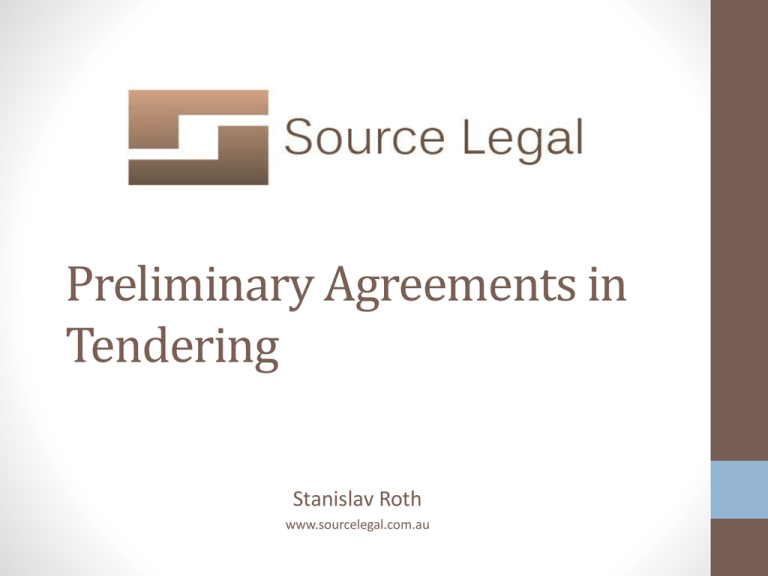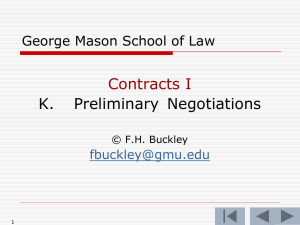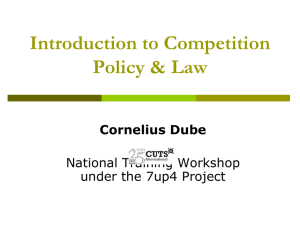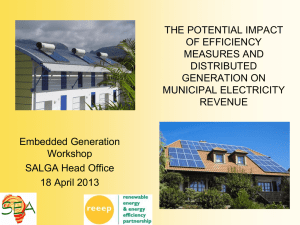Click here for presentation
advertisement

Preliminary Agreements in Tendering Stanislav Roth www.sourcelegal.com.au Focus for today • Overview of contract formation • Pre-bid and early works agreements in tendering www.sourcelegal.com.au • Law on preliminary agreements 2 Innovative legal outsourcing solutions Contract formation Offer / Acceptance Certainty / Completeness Acceptance must “mirror” offer Essential terms must be certain and complete Consideration Each party gives something of value Intention Determined objectively from text of contract and parties’ conduct www.sourcelegal.com.au Contract Formation 3 What is a preliminary agreement? • Memorandum of understanding • Letter of intent • Pre-bid agreement www.sourcelegal.com.au • Heads of agreement • Teaming agreement • Early works agreement 4 Law on preliminary agreements Three categories - Masters v Cameron (1954) 91 CLR 353 • Parties agree on all terms but propose to have them restated in more • Parties agree on all terms but have made performance of some of them conditional upon the execution of a formal contract (binding) • www.sourcelegal.com.au detail in a formal contract (binding) Parties do not intend to be bound unless and until they execute a formal contract (non-binding) 5 Law on preliminary agreements ! But important fourth category: Parties intend to be bound by the terms agreed while expecting a further formal contract in substitution of the first and containing further terms (binding) www.sourcelegal.com.au • 6 • “Subject to contract” – not decisive but indicative of “non-binding” • Terminology (LOI, MOU, HOA…) - not decisive • Objective construction of the language and context (pre- and postagreement communications are relevant) www.sourcelegal.com.au To bind or not to bind? 7 • Useful tool for early partnering • May enhance tendering capabilities/credibility • Typical issues: • Binding or non-binding • Exclusive or non-exclusive • Future contractual structure: • Subcontract (back-to-back terms with head contract?) • Joint venture/consortium (beware of the Competition and Consumer Act). If JV, “joint and www.sourcelegal.com.au Pre-bid agreements several” liability to customer is likely - need to consider how liability is apportioned between JV partners • Exit provisions, division of scope, key terms of future contract (e.g. limitation of liability) 8 Early works agreements • Convenient for tight schedule projects – early engineering, long lead • May give contractor/supplier leverage • Typical issues: • Binding or non-binding • Scope of work under EWA • Payment for work under EWA • Applicable terms of contract • Timeframe for entering into future contract • Termination/exit and applicable payment www.sourcelegal.com.au delivery equipment 9 • Often not clear whether binding or not • If binding: • • often incomplete/poorly drafted • leave many important matters to future agreement • fail to have appropriate exit provisions • risk of parties failing to follow through with a proper agreement If non-binding: • why do it? • work is performed without contract - unlimited liability, no contractual warranties etc • no certainty of recouping start-up or project cancellation costs www.sourcelegal.com.au What’s the matter with preliminary agreements? 10 Checklist • Use preliminary agreements selectively. Avoid unnecessary preliminary agreements. Use clear words to indicate whether a preliminary agreement should be binding or non-binding. Draft the preliminary agreement accordingly. • Avoid templates. Every preliminary agreement is specific to the needs of the project. • Clearly define what the parties are to do in accordance with the preliminary agreement. • www.sourcelegal.com.au • Provide for a framework and timetable for entering into a formal contract and cover any key terms. • Outline what should happen if such contract does not eventuate. 11











